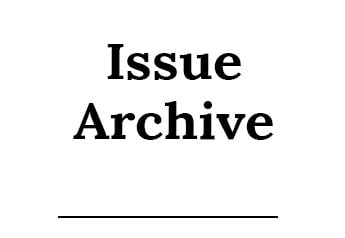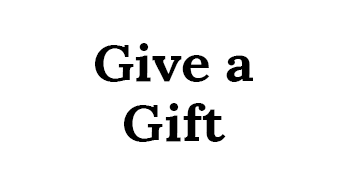Leah Cofield knows from experience that when times are hard, sometimes you just need to get away and reset. That idea is what led her to start Route to Respite in Schnecksville, combining therapy and mental health care with a facility that, when completed, will offer clients a brief retreat from their troubles and a chance to heal and grow.
Tell us about what led you to establish your career as a therapist.
Through my own pain and trauma, I was determined at a young age to become the person I so desperately needed. Growing up in a home marked by addiction and abuse shaped my mission: to give a voice back to those who have been silenced. My childhood was the perfect soil for abandonment to take root, and that deep wound strangled many areas of my life. I believed the lie that I was alone, then shame grew and isolation was the only thing that felt safe. I don’t think of being a therapist as a career. Being a therapist is a personal commitment to my younger self, little Leah, and to those in my community whose voices have been taken from them.
Tell us about Route to Respite and what makes it unique for someone seeking counseling.
I spent seven and a half years immersed in diverse cultures, religions and socioeconomic backgrounds, serving both domestically and internationally. I learned the importance of sitting with people to truly understand their stories—their life experiences and microcultures that shape their norms and beliefs. At Route to Respite, we are committed to treating the whole person, addressing their mental, physical and spiritual well-being because we understand a person is made up of many parts. Mental health is whole health.
Describe what “respite” means to you and how that is helpful for healing.
It simply means a time of rest; physically, emotionally and spiritually. I have never met a single person who didn’t need rest. Our bodies were not created to keep going and going and live in survival mode. The process of healing can actually be exhausting work! We have to be intentional and give ourselves permission to pause and be present. At Route to Respite, we are committed to creating transformative experiences for individuals and families navigating life’s most challenging seasons. Upon the completion of our facility, we will offer specialized retreats designed to meet people exactly where they are in their journey, with a focus on addressing unique challenges in a supportive, restorative environment. Some of our upcoming retreats include:
- For young people impacted by a parent’s substance abuse: A safe and supportive space to process their emotions, build resilience and connect with others who share similar experiences.
- For marriages on the brink: A retreat designed for couples to reconnect, rebuild trust and explore pathways to healing and restoration.
- For burned-out moms: A restorative retreat to recharge, rediscover self-compassion and develop tools to navigate the pressures of motherhood.
Each retreat is thoughtfully designed to address specific struggles, offering a combination of workshops, group sessions and quiet moments to reflect. While our center is currently under construction, we are excited to announce that these retreats will become a cornerstone of our mission once our facility is complete.
What are some therapy modalities that you employ at Route to Respite?
I am trauma-informed, which means I prioritize one’s safety and create a supportive environment. Because we take a whole-person approach, we offer talk therapy and integrate body work through somatic experiencing. Breathwork and body movements are integrated frequently. Our desire is to partner with clients to get to the root of the problem. Therapy and healing are much like pulling weeds from the ground. Even if you think you've gotten the whole thing, sometimes small root fragments can remain in the soil, which can then regrow into new plants, essentially causing more weeds to come back. And pulling weeds can disturb the soil, bringing dormant weed seeds closer to the surface which encourages germinating, leading to further weed growth.
Tell us about how you employ genograms to address generational trauma.
For many of us, we are unaware of what drives our behaviors. Our culture lacks self-awareness, and we tend to think everything is about us. It takes willingness and a level of emotional maturity to go deeper. Genograms are a visual way of looking at a family tree in a much more detailed way. They offer a client and counselor a vision to identify patterns established across generations and an understanding how past events may be impacting current behaviors and thoughts.
Community is important in your approach to mental health. What are some ways you recommend people connect with those around them?
Have you ever sat in a crowded room and still felt completely alone? Many people live within a community yet never feel truly connected. These feelings of loneliness and isolation are often heightened during times of struggle. One of the most common barriers to connection is discomfort with ourselves. When we are uncomfortable in our own skin, it becomes harder to be vulnerable with others. Meaningful connections thrive when we allow ourselves to be open. Start small—share honest pieces of your story with someone you trust. Another practical step toward connection is spending intentional, distraction-free time with others. By being present without the interruptions of technology, we foster active listening, strengthen nonverbal communication and create space for genuine interaction.
What is your personal philosophy when it comes to wellness?
This goes back to fostering wellness for my whole being. I often do weekly check-ins with myself. What do I need emotionally? What do I need mentally? What do I need physically? What do I need spiritually? Answering these questions allows me to understand myself better and meet some basic needs.
Describe your morning routine. Is there anything you can’t start your day without?
Mornings are more difficult for me! I am like other parents who are running around making sure their kids have eaten and make it to the bus in time. Due to my trauma, it is easier for my nervous system to get stuck in fight-or-flight. In the mornings, I try not to rush and intentionally move slower so as to not activate myself. I open the shades and get as much sunlight as possible and on a good day, I complete a three-to-five-minute ice bath. Every morning I enjoy warm water with a splash of apple cider vinegar, and of course time with the Lord. Without Him, I am nothing. And on a really, really good day, I enjoy boxing! Boxing has been an outlet I have used in my healing journey and has been so impactful both mentally and physically.
What about your evening routine?
I love the quietness after everyone goes to sleep. I find solace in the stillness. Taking a hot shower and limiting screen time and bright lights help to reduce stress from the day and prepare my body for sleep. I enjoy lavender essential oil and put it on my pillow while I read. On more stressful days I enjoy playing bilateral stimulation music on a loop.
What’s your favorite meal to make at home?
I’m much more of a grazer. I love to pick on a variety of foods at once and could eat off a charcuterie board every day. But who would have known that as a wife and mother you have to become a chef and the most creative person ever to come up with dinner every single day? My kids love breakfast for dinner, and it tends to make the rotation weekly!
What’s something you love to indulge in?
Honestly, I will never feel bad about eating something sweet with my coffee. Cake at 10 a.m. with my coffee? Sure! A slice of pie with my coffee? Even better! I don’t put sugar in my coffee so I guess it all comes out even in the end. Other than that, I remain a constant learner. I want to continue growing and becoming the best version of myself. For little Leah, for my husband, my kids and my community. I will always indulge in healing.
Do you have a preferred exercise routine?
The gym is the most toxic relationship I have. I absolutely know it is good for me physically and mentally. But I also dread it. I have always wondered how people enjoy running. I needed to come to terms with the fact that movement is what I needed and that it can look different. I enjoy walks outside, dancing and boxing.
How do you stay motivated?
Nothing beats intrinsic motivation. Proving to myself that I can do it and overcome my own doubts and obstacles. I also recognize the value my children bring. I know they are watching me. Material things don’t matter; I want to leave a legacy of faith in the midst of testing, persistence in the midst of opposition, hope in the midst of pain and steadfast in the midst of adversity. My life is but a vapor, so I am motivated by eternity.
Who is someone you look up to?
I do not have one specific person, but rather I admire the strength and resilience of one’s testimony. I admire their unwavering hope when it all looks dark. I admire their ability to push through and keep going. I admire integrity and what drives a person to do what is right. I admire courage in tough decisions. And I admire honesty when telling a lie is easier.
Do you have a personal mantra you’d like to share?
Pain for purpose. Essentially, the pain I endure will serve as a catalyst for a greater good.
484.830.9133 | routetorespite.org
Published as “Living Well With" in the April 2025 edition of Lehigh Valley Style magazine.














